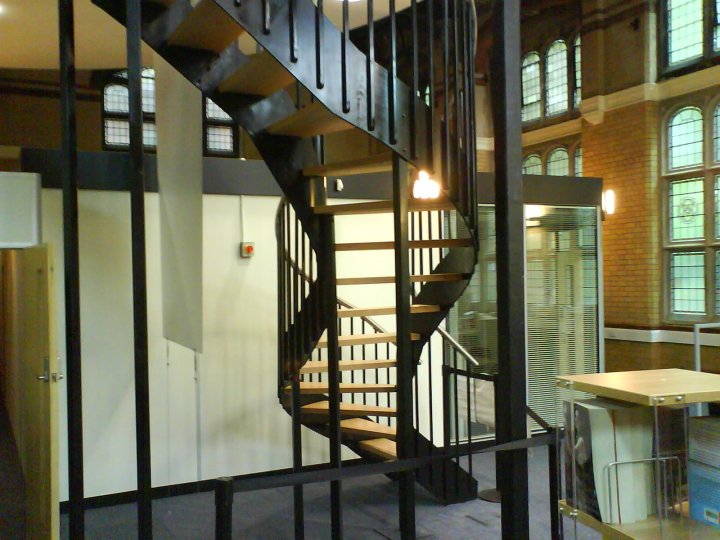Spiral staircases for homes
A property of more than one level will of course need stairs, and one way of connecting the two storeys of a home is with a spiral staircase design.
A traditional house in the UK will generally have a staircase leading from the front door and the front hallway to the upper level of the home; this is extremely common but can be boring and plain. Wooden stairs with carpet are not just plain however; they take up unnecessary space.
A spiral staircase design will create a feeling of light, will take up less space than traditional stairs, and will create a focal point in the home. There can be something quite magical about owning a spiral staircase, perhaps because spiraling stairs are often featured in fairytales, or perhaps because of the intricate design on the spindles; whatever the reason, a spiral staircase can bring an air of grace and magic.
Spiral stair kits are available at very reasonable prices, and in different lengths, meaning it is possible to choose a length and steepness of stairs suited to almost any home. There are however some decisions to make, and these begin with the material that will be used. In a modern home it is common to see floating stairs with glass panelling; in a traditional home wrought iron spindles and a wooden baluster are common.
With the possibility to create a staircase with wrought iron, wood, glass, or other metals, a spiral staircase and its intricate curves will allow stairs to become a focal point of attention, creating the perfect ambience whether traditional or modern.
--Classic Ironworks 12:59, 5 June 2015 (BST)
[edit] Find out more
[edit] Related articles on Designing Buildings Wiki
Featured articles and news
RTPI leader to become new CIOB Chief Executive Officer
Dr Victoria Hills MRTPI, FICE to take over after Caroline Gumble’s departure.
Social and affordable housing, a long term plan for delivery
The “Delivering a Decade of Renewal for Social and Affordable Housing” strategy sets out future path.
A change to adoptive architecture
Effects of global weather warming on architectural detailing, material choice and human interaction.
The proposed publicly owned and backed subsidiary of Homes England, to facilitate new homes.
How big is the problem and what can we do to mitigate the effects?
Overheating guidance and tools for building designers
A number of cool guides to help with the heat.
The UK's Modern Industrial Strategy: A 10 year plan
Previous consultation criticism, current key elements and general support with some persisting reservations.
Building Safety Regulator reforms
New roles, new staff and a new fast track service pave the way for a single construction regulator.
Architectural Technologist CPDs and Communications
CIAT CPD… and how you can do it!
Cooling centres and cool spaces
Managing extreme heat in cities by directing the public to places for heat stress relief and water sources.
Winter gardens: A brief history and warm variations
Extending the season with glass in different forms and terms.
Restoring Great Yarmouth's Winter Gardens
Transforming one of the least sustainable constructions imaginable.
Construction Skills Mission Board launch sector drive
Newly formed government and industry collaboration set strategy for recruiting an additional 100,000 construction workers a year.
New Architects Code comes into effect in September 2025
ARB Architects Code of Conduct and Practice available with ongoing consultation regarding guidance.
Welsh Skills Body (Medr) launches ambitious plan
The new skills body brings together funding and regulation of tertiary education and research for the devolved nation.
Paul Gandy FCIOB announced as next CIOB President
Former Tilbury Douglas CEO takes helm.
UK Infrastructure: A 10 Year Strategy. In brief with reactions
With the National Infrastructure and Service Transformation Authority (NISTA).























